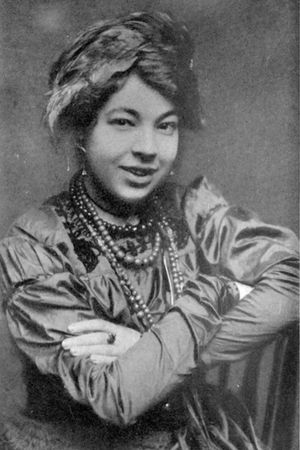The 'Rider-Waite' deck is probably the one most used by tarot practitioners, and has almost become the standard 'divinatory' design. Many of the vast range of contemporary decks are variations and developments of its designs. However now most practitioners understand that it has the wrong name and is more usually referred to as the Waite-Smith tarot.
🔽The person responsible for its elaborate mystical designs, was neither Rider (the publisher) or Waite (the writer of the guidebook that accompanied its first publication), it was Pamela Coleman Smith, a young artist, born in London of American and (perhaps) Jamaican parents, on the 16th February 1878 (coincidently, this review was published on-line on the 145th anniversary of her birth).
This book tells the story of her life and work in graphic form, with clear, bright illustrations by the author Cat Willett. In her introduction Cat explains how she first encountered the Rider-Waite-Colman deck and its creator when consulting a practitioner after feeling rather disoriented on her arrival as a student in New York. The design and symbolism of the cards intrigued her, and later when looking for a graduate research project she decided to examine further the life and work of the creator of those designs.
She found the designer to be a character whose life had resonances with own. Colman Smith seemed to have had a happy, if rather unsettled childhood. She spent her early years in Manchester, where Willett suggests she may have been influenced by the Women's Rights and Suffragist movements which were influential in the city. Other early influences were the various 'guardians' whom she lived with while her parents were abroad attending to her father's business interests. These included artistic and theatrical figures such as Ellen Terry, Bram Stoker and Henry Irving.
Moving to New York, Colman Smith began serious art studies at the Pratt Institute in Brooklyn. However she had to give them up before obtaining her degree to join her parents, now living in Jamaica, when her mother became seriously ill. She died shortly after Colman Smith's arrival.
Life in Jamaica introduced her to new artistic influences. She wrote and illustrated an article about Jamaican folk tales, the 'Annancy Stories', for the American Journal of Folklore, as well as organising a kindergarten for local children which allowed her to explore her theatrical talents. She returned to New York for her first gallery art exhibition and renewed her friendships in the artistic and theatrical circles there. In 1899 Colman Smith moved to England, settling in Battersea, where she soon received the news that her father had died.
On her own she began to develop a career in illustration work, a field where women artists were more easily accepted than the 'fine arts'. She began by co-publishing an art magazine with Jack Yeats, but the collaboration was unsuccessful, as was a later magazine she produced on her own. However her reputation as an artist was growing and she had another successful New York exhibition.
It was in London that she began a growing interest in the occult, and through her friendship with W B Yeats became a member of the Order of the Golden Dawn, where she met Arthur Edward Waite, who commissioned her to produce illustrations for his magazine, Occult Review. He asked her to produce designs for a tarot deck that he had been planning for some time.
Willett explains that Colman Smith work was downplayed by Waite, whom she quotes as saying he had “spoon fed her my orders”, describing her in the guidebook to the deck as “a young woman artist who created the deck based on Waite's instructions”.
Although this may have been somewhat of the case in relation to the Major Arcana, where there was already a fairly standardised format based particularly on the Marseilles tarot, this was not the case for all the 52 cards of the Minor Arcana, which had previously only been marked with standard suit designs. Here Colman Smith produced a remarkable series of illustrations which incorporated the suit signs into complex images with spiritual meaning. She managed to accomplish this in just six months.
Doing the work for a very small fixed fee, and not receiving any royalties for publication, added to Colman Smith's financial insecurity, which dogged her for much of the rest of her life. Willett describes her later advocacy for the suffragist movement, for women's education, and earning a living by illustrating books, designing posters and storytelling. It is here that the author's identification with her subject comes through strongest.
Although I was familiar with the story of Colman Smith's involvement with Yeats and Waite, and the shabby way she had been treated over her tarot designs, I knew little of the rest of her life. I was interested to learn that she was a synesthete, and sensed music as colour. Willett's book is a good introduction; the charming illustrated format expresses very clearly the affection the author has for her subject, but it can only give an outline of a long and complex life, and indeed its aim is to stimulate such an interest rather than satisfy it.
I hope that someone might now go further and produce the full scale biography that this remarkable woman so clearly deserves.
- Richard Samuels.



No comments:
Post a Comment